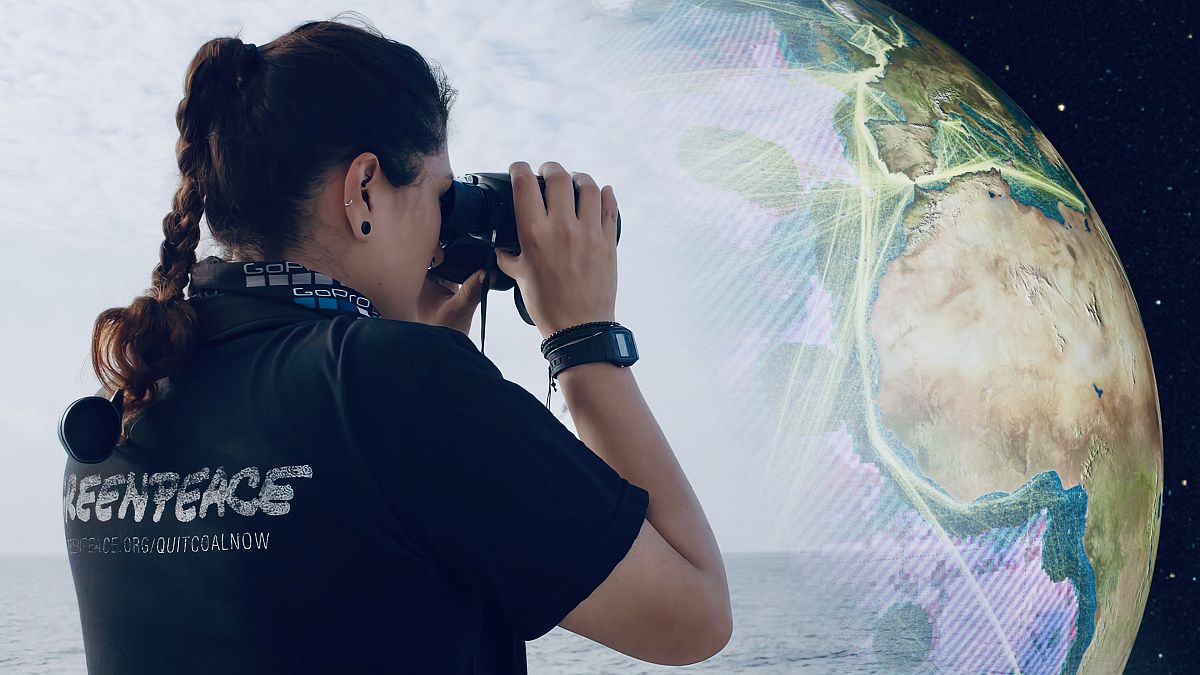High Seas Treaty paves the way for ocean protection

Just 1% of the high seas are protected — a far cry from the global goal to safeguard 30% of our oceans and seas by 2030. A year on from the High Seas Agreement’s wrap-up at the United Nations, how much progress has been made in protecting ocean life from the expanding high sea industries?
National boundaries at sea are invisible, but it can be a matter of life or death for marine animals swimming across them.
In February and March, scientists on a Greenpeace vessel conducted a six-week study around the Galápagos Marine Reserve. They discovered that biodiversity in these vast protected areas is thriving, but safety is a concern in the international waters nearby.
East of the Galápagos Archipelago, migratory species have to cross an area open to industrial fishing, which isn’t regulated by any national laws.
In this region, as in others around the globe, the high seas are facing a rising tide of human activity.
Stuart Banks, Senior Marine Researcher and Principal Investigator at the Charles Darwin Foundation told Euronews: “With new industry, things like deep water mining and unsustainable fishing practices, what we’re particularly concerned about is that these areas are particularly susceptible – there’s a danger that without actually having some kind of recognition of this kind of incredible diversity, we may lose it before we can even get a chance to recognise, appreciate and protect it.”
Nations have historically struggled to designate conservation sites outside their exclusive economic zones. However, activists are hopeful that a new international treaty will change this, allowing for the protection of ocean areas beyond national jurisdictions.
“If we succeed in designating this area as a marine protected area, it will mark a great victory. We’ll bridge the gap, ensuring a region once heavily threatened by industrial fishing, is safeguarded, allowing species to navigate safely,” explained Ruth Ramos, a campaigner for Greenpeace.
Protecting our oceans
The goal is to remove destructive activities like intense fishing and heavy maritime traffic from delicate ecosystems and migratory paths.
“The idea is to find the best solution to accommodate them [marine life], with minimum impact on obvious different sectors and their economic activities,” Alex Hearn, a professor at the School of Biological and Environmental Sciences, atthe Universidad San Fransciso de Quito, said. He also works as a researcher at the Galapagos Science Center
For a long time, protecting the high seas seemed unrealistic.
International waters cover half of our planet’s surface and are managed by a wide range of organisations. Each one focuses on specific regions or activities. However, none of these groups has the authority to ensure the conservation of ocean biodiversity.
Recent studies suggest that protecting key parts of the high seas could restore ocean health with minimal impact on the fishing industry. However, conservation efforts must consider all offshore activities, including global shipping traffic, crossing sensitive locations.
Protecting the ocean while maintaining our interconnected economies is a challenging task. It took more than 15 years of discussions at the United Nations before delegates reached a historic agreement to protect marine biodiversity in international waters in March 2023.
The Biodiversity Beyond National Jurisdictions Agreement, also known as the ‘Treaty of the High Seas’, doesn’t create new protected areas. However, it contains a legal framework for nations to do so.
The treaty has been signed by 88 parties, including all 27 EU member states, China and the US.
Rebecca Hubbard, the director of High Seas Alliance said that the treaty enables the protection of two-thirds of the world’s oceans and seas for the first time. “We can comprehensively assess the potentially harmful impacts on the ocean and its precious resources. And for the first time, we can ensure that the benefits and access to those resources are equitably and fairly shared,” she said.
What’s the catch?
The treaty will not become effective until at least 60 states ratify it. But Minna Epps, the director of the Ocean Team at the International Union for Conservation of Nature told Euronews that the signatory countries want to see this treaty implemented: “That will is really there. So now it’s a matter of how can we help the countries, how can we help by providing — building the capacity, raising awareness.
“Also, I think there are some question marks from the Global South thinking about what is it going to cost to implement, what’s the burden, etc. At the same time, in parallel, we also need to build the institutional mechanism to support it,” she added.
The Monaco Blue Initiative is one of the global platforms that allows experts and decision makers discuss how they might implement the treaty once it becomes effective.
At this year’s forum, the Seychelles announced it was ratifying the treaty, joining Chile and Palau as the only countries to have done so thus far. Many coastal or small island nations depend on the health of the high seas to drive their economies forward and ensure food security.
“The high seas are remote, the open ocean — but it’s completely relevant to life in the coastal seas, to the health of coral reefs and fish stocks and fishing communities. So if we don’t manage the high seas, we can break those connections,” said David Obura, the chair of the Intergovernmental Platform on Biodiversity and Ecosystem Services and the director of CORDIO East Africa.
“And so the fisheries can collapse in coastal seas. If we protect the high seas effectively, then we can maintain the resilience and the robustness of the fish stocks, and therefore also the livelihoods dependent on them,” he concluded.
Many questions about the practical implementation of the agreement remain.
According to Enric Sala, Explorer in Residence for National Geographic, achieving consensus among nations with diverse economic interests is challenging: “It is so much easier to protect anything within a country’s waters because you’re dealing with one government, right?
“The high seas is a little bit like the Wild West, it is going to be very challenging because even though that is a UN process, a legal instrument for countries to agree to protect areas, of course, we know that some countries are going to oppose to anything that prevents their fishing — unaccounted, unregulated — everywhere they want,” he said.
A pressing issue is funding. The global biodiversity target aims to protect at least 30 per cent of marine life by 2030. Enforcing this will require substantial budgets, with costs and responsibilities shared fairly among state and possibly even non-state actors.
“Who should pay to protect nature? Should it be you or me?” asked Robert Calcagno, the CEO of the Oceanographic Institute at the Prince Albert I of Monaco Foundation.
“We need to think and establish mechanisms to enable the funding of high seas protection”.
On the other hand, Olivier Wenden, the Vice-president and CEO of the Prince Albert II of Monaco Foundation considers some costs as an investment.
“It’s somewhat counterintuitive, but a marine protected area in the high seas allows fish stocks to recover, therefore, enabling fishermen to develop their economic activity.
“It’s estimated that the ratio is ten to one, meaning one dollar invested in the high seas generates ten dollars in return on investment,” he told Euronews.
The European Union, which brokered the High Seas agreement, views it as a manifestation of its commitment to sustainable development and the equitable sharing of marine resources.
“Now we need to push ourselves into the ratification. And we are quite ahead in our EU procedure. I really hope that we will do it as soon as possible… We need 60 signatures. Almost half of them can come from the European Union. So we are committed to doing it as soon as possible,” said Charlina Vitcheva, the Director General of the European Commission’s DG MARE.
Supporters of the treaty are advocating for it to be implemented by 2025 to protect marine species facing extinction.
Source: Euro News














